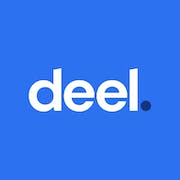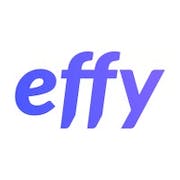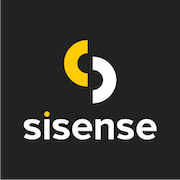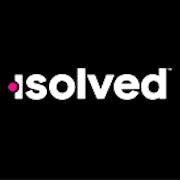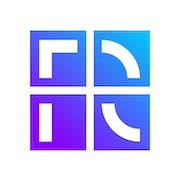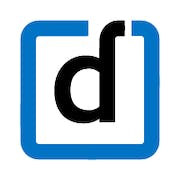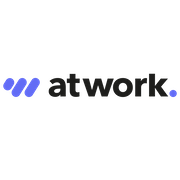Looking for the best HR Analytics Software? Our comprehensive buyers guide covers everything you need to know in one place. Compare top solutions and make an informed decision today!
Are you struggling to make informed HR decisions? Do you want to maximize the potential of your workforce by leveraging data-driven insights? If your answer is a resounding "yes," then investing in HR analytics software might just be the solution you need. In today's fast-paced business landscape, human resources professionals must have the right tools at their fingertips to attract top talent, maintain employee satisfaction, and ultimately drive organizational success. Read on to discover everything you need to know to make an agile decision when investing in an HR analytics system.
What is HR analytics software?
HR analytics software is a tool that is relevant to organizations' employees used to gather, analyze and interpret data (in real-time). By mining workforce data, organizations can gain insights about their people that help them make wise decisions. The system involves using various data sources such as employee surveys, HR databases, payroll records, and recruitment data giving you a competitive edge in today's rapidly evolving marketplace. The data can then be processed, analyzed, and visualized, presenting the underlying insights.
HR analytics application allows companies to leverage their data on employee demographics, performance, and engagement levels, to make important management decisions. In fact, more than 70% of companies now say they consider people analytics to be a high priority.
Here are some common use-cases of the application
Recruitment optimization
Businesses can analyze potential candidates based on historical data using this solution and they can also identify trends from past hires as well as identify what worked and what didn't. By doing so, they can develop better recruitment strategies.
Employee retention
It can also help companies retain their best staff and also analyze factors that contribute to employee engagement, burnout, and job satisfaction, this information can inform the design of retention strategies and incentive programs.
Performance management
Companies can leverage their performance data to identify outliers and high potential employees. This data can aid managers in developing personalized development plans for their team members, increasing productivity, and boosting efficiency.
Workforce planning
It is also used to forecast employee headcount and recruitment initiatives, which is critical for planning budgets, resources, and projects.
What are the benefits of utilizing an HR analytics application?
This software is a valuable tool for organizations in today's data-driven, competitive landscape. Here are some main benefits of adopting such a system:
Improved hiring decisions
With this solution, business leaders can evaluate candidate data to identify the best hires, based on factors such as education, work experience, and soft skills.
Better retention rates
It enables companies to assess employee satisfaction and engagement, and identify areas that need improvement, as a result, this can create an environment that encourages talent retention.
Enhanced performance management
This software allows businesses to analyze employee performance metrics, such as sales data and productivity including enabling them to make better, data-driven decisions when setting targets, providing feedback, and offering rewards and recognition.
Cost savings
HR analytics software can aid organizations in saving money by reducing recruitment and training expenses, minimizing turnover rates, and enhancing employee productivity across all departments.
Compliance
Making use of this type of software, businesses are able to stay compliant with local regulations and labor laws, ensuring that all HR policies are in line with legal requirements .
10 key features of an HR analytics platform
If you're looking for ways to analyze your company's workforce and make data-driven decisions, then an people analytics system is a must-have tool. It is a solution that combines data analysis and reporting capabilities to help organizations make knowledgeable decisions regarding their workforce. Here are some of its common attributes:
-
Data visualization: It offers graphical representations of complex data sets and helps decision-makers understand data by providing them with charts, graphs, and other visualizations.
-
Metrics analysis: An HR analytics tool calculates various HR metrics like headcount, staff turnover rate, average cost per hire, and much more.
-
Predictive analytics: It uses historical data to make predictions about employee behavior. It provides HR managers and decision-makers with insight into future trends and possible outcomes.
-
Custom reporting: It allows you to generate custom reports that meet your organization's specific needs, streamlines reporting and eliminates the need for manual HR reporting.
-
Interactive dashboard: An interactive dashboard presents critical HR data in real-time and can be customized to fit the user's specific needs.
-
Employee performance tracking: HR analytics software provides powerful analytics tools to track productivity, including trends and critical insights into workforce turnover, tenure, performance ratings, and more.
-
Employee engagement analysis: The solution can analyze employee engagement levels and provide insights into engagement drivers. The results can guide HR managers in developing engagement strategies.
-
Compliance management: An HR analytics solution tracks compliance policies, regulations, and legislation, ensuring compliance with labor laws and regulations.
-
Succession planning and talent management: This program offers HR managers and decision-makers with a range of talent management tools that enable better succession planning, including performance management, succession planning, career planning, and development.
-
Integration with other HR systems: HR analytics software can be integrated with other HR systems such as HR management, talent acquisition and development and unified communication and collaboration.
Things to consider when investing in an HR analytics solution
Human resources (HR) departments have always played a crucial role in ensuring that an organization's workforce is productive and engaged. The emergence of HR analytics software tools has made it easier for businesses to make wise business decisions and with numerous options available in the market, choosing the right package can be challenging. This section discusses the main factors to consider before making a purchase.
-
Scalability: As your business grows, so will your workforce. Make certain that the program you choose can accommodate this growth without a hitch. Look for one that can handle large amounts of data and is flexible enough to adapt to your organization's changing needs.
-
Ease of use: Before making a purchase, ensure that the program is user-friendly and easy to navigate. You don't want to invest in a tool that is hard to use and requires extensive training to master.
-
Data security: HR analytics software stores sensitive employee data that must be kept secure. Ensure that the application you choose adheres to industry standards and has adequate measures in place to protect your data.
-
Integration: It should integrate easily with your HR management system to streamline your processes. Look for software tools that have open APIs, which make it easy to integrate with other systems.
-
Customization: Every business is unique, and so are its HR analytics needs. Ensure that the application you purchase is customizable, allowing you to tailor it to your organization's specific needs.
-
Reporting and analytics: The ability to generate accurate, easy-to-understand reports is crucial when it comes to this tool and choosing one that comes with a range of pre-built reports and custom reporting functions is beneficial.
-
Support and maintenance: Ensure that the vendor offers robust after-sales support, including regular updates and maintenance. This will help you get the most out of your people analytics platform investment.
Market trends for an HR analytics system
This year and beyond, the use of this system is expected to play an even more significant role in HR decision-making. Enterprises are looking to leverage the power of data analysis to improve employee retention, recruitment, and training. Some of the biggest HR analytics software recorded trends in 2023 included enhanced data visualization and customization capabilities, along with powerful AI algorithms; the most popular being offering a range of features, from customizable dashboards and KPI tracking to predictive analytics and workforce planning.
With the right people analytics solution, corporations can gain insight into the most critical HR metrics and make sound decisions that benefit both employees and the company as a whole. Findings from a research on researchgate suggest that by 2025, HR analytics will have become an established discipline, will have a proven impact on business outcomes, and will have a strong influence in operational and strategic decision making.
Conclusion
To conclude, HR analytics software is widely adopted across various industries, catering to organizations with large workforces and complex structures. It addresses the need for insights into workforce efficiency, recruitment, and retention. However, selecting the right solution can be challenging. It's crucial to consider specific factors before making a choice. Investing in the appropriate one enables organizations to optimize workforce dynamics and drive business performance and growth through valuable data-driven insights.
Choosing an HR analytics platform that provides customizable reporting, predictive analytics capabilities, and seamless integration with other systems will help organizations make more informed people decisions to impact the bottom line.


